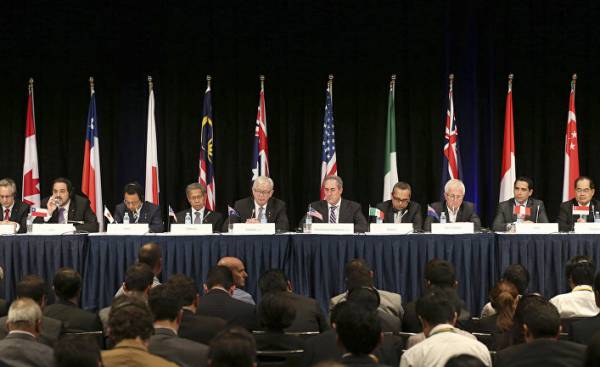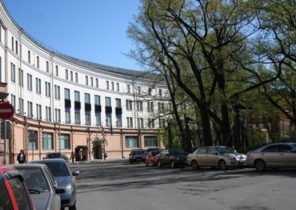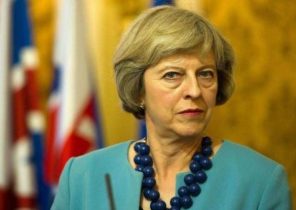
In viña del Mar (Chile) held a meeting of representatives of the member countries of the TRANS-Pacific partnership, which Donald trump during the presidential campaign, managed to blame all the sins in my first day as President left in the lurch.
In addition to the countries participating in the meeting is attended by the representatives of South Korea, Colombia and Chile. Their goal is to prevent the results of long and complex negotiations that spanned almost ten years and completed in October 2015, has sunk into oblivion. However, this would be very difficult.
In many ways, the desire to create a multilateral trade architecture in the Pacific was due to the expected “sharing” or “compromise.”
This kind of “deal” — not uncommon in the history of the United States, who take the leadership in international economic relations, began to create alliances. In exchange for own enhanced geopolitical influence, they offered the advantages of access to a huge domestic market.
The signs of the “exchange of services” can be found not only in funding, aimed at the recovery of Germany and Japan after world war II, but also in the rise of these countries as global trading powers. America, of course, was the loser: former enemies became involved in the political and economic orbit of the United States.
Similar geopolitical aspirations, we can discern the formation of the so-called “Asian model”. We are talking about growth policy pursued by countries such as South Korea, Taiwan or Singapore and in which exports of manufactured goods to the United States is the Central element.
And recall once again: the United States in addition to expanding their global networks by reducing production costs and consumer prices also receive the opportunity to add to their list of regional alliances.
It turns out that for many countries, less developed compared to the United States as the initial participants in the TPP (of course, with the exception of Canada, Japan, New Zealand and Australia) — the geopolitical interest of the United States was a “window of opportunity” to obtain significant revenues from exports to the US.
Under the Obama administration it seemed that the negotiation logic of the United States was a natural way to meet these expectations and strengthen them. Predecessor trump not only planned and carried out in the foreign policy of “turning to Asia”, but has taken this step, relying on TTP as the primary economic mechanism.
Obviously, trump and his advisors see the world differently. When it comes to the Asia-Pacific region, the current administration demonstrates a complete lack of geopolitical interests, and also extends to the region of the same doctrine of “trade for trade”. This, according to Peter Navarro (Peter Navarro), Director, National Board of trade of the White house, is to promote “a fair and mutually beneficial” exchange.
Without the United States, “General cement”, holding in one design TTP Oceania, Asia, South and North America, largely turns into something soluble.
Of course, a lot of talk about the possible participation of TTP in the new China. However, for many countries, aimed at economic development, China cannot serve as a natural and automatic replacement of the United States in the role that they played in TTP.
Exporters of agricultural and mineral raw materials, such as Peru, Chile and Australia, see TTP, led by China, a kind of continuation of the former — only the “more volume”. Refers to the growth of export of raw materials without considering the potential for greater interdependence in trade activities with higher added value.
As for smaller Asian partners such as Vietnam and Malaysia, the TPP, led by China, will affect the dynamics of industrialization in these countries is very low. Due to the increase in production costs in China, they naturally get an increasing share of investment of the Chinese, who are looking for a cheaper “outsourcing”.
Last week that position, for example, announced Malaysian Minister of trade, Mustapa Mohamed (Mustapa Mohamed), who pointed out that “the TTP is the most attractive for us was the United States.”
Moreover, TTP provides numerous provisions on the establishment of common standards in employment law, intellectual property protection, environmental and other norms to which China, according to Julie Bishop (Julie Bishop), Minister for foreign Affairs of Australia, “not ready, and does not have the appropriate capabilities”.
In addition, the geopolitics, which in many cases have played into the hands of the trade, will reduce Japan’s interest if the TTP will enter China. Tokyo is not ready for the role of “Junior partner” in the economic structure, where the largest party is Beijing.
Indeed, there are arguments and the path that will eventually allow the TTP to survive and without the United States of trump.
We should not underestimate the desire of many parties to commercial cooperation with Beijing privileged access to the huge Chinese resources as a direct source of investments, joint ventures or even interstate loans.
There is the argument that even without the US or China members of the TTP should focus on the development of partnerships. It is possible that in the case of the collapse of the government trump Washington will join the TPP, which will take effect in four years. That was a clear return to the “mainstream”, which was an external US trade policy, starting with Truman and ending with Obama.
One thing is certain. The revival of the TPP without the United States in the current environment of rampant protectionism — the challenge of the difficult, delicate and hardly feasible.







